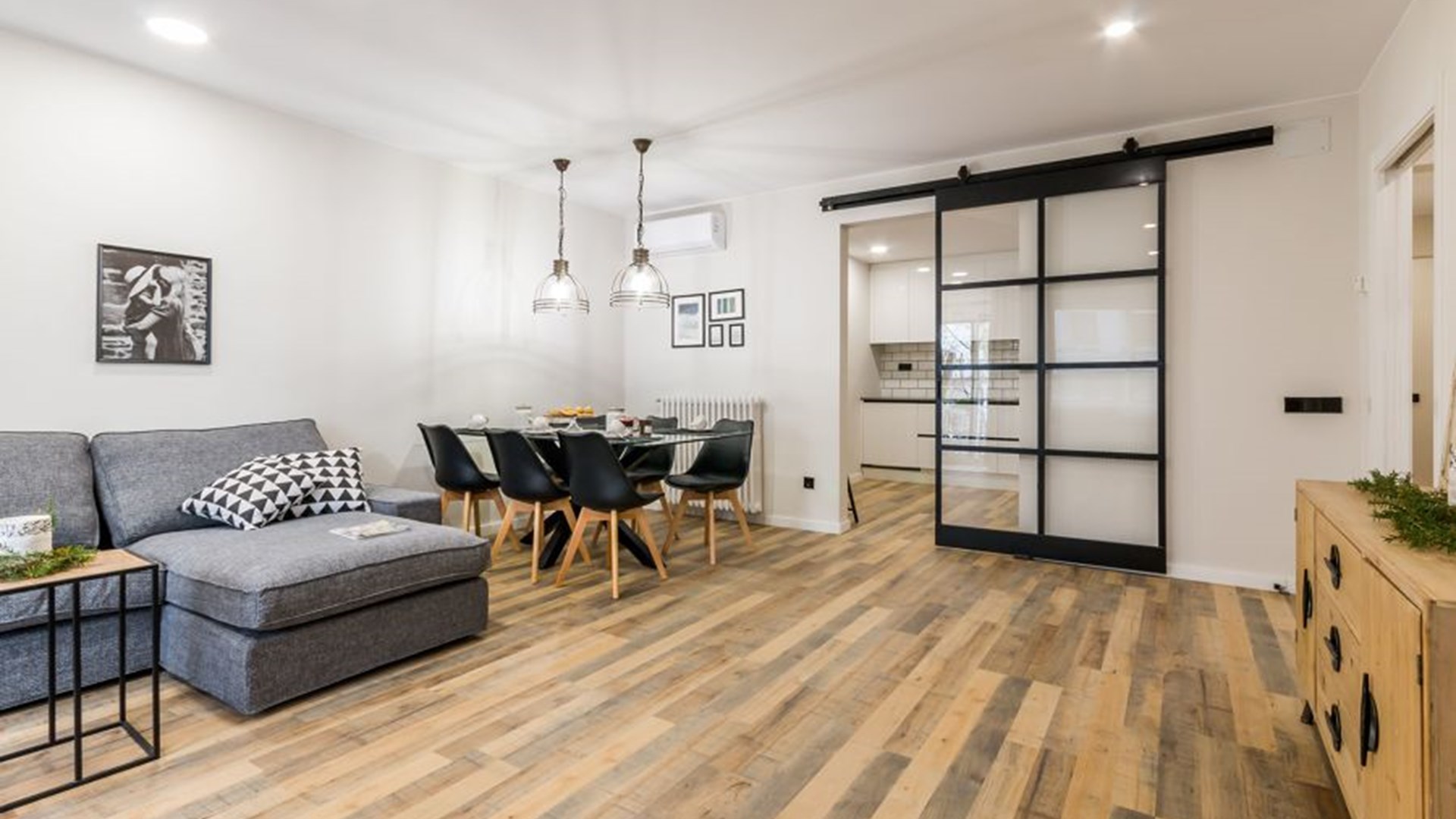The cold stays out

It doesn't make any sense to put the heating to the fullest, thicken the bill and feel that it is still cold at home. Analyze it to the millimeter to know where the heat is escaping. The most frequent leaks are located in the entrance door (or those of the terraces) and the windows. Repairing damage and sealing windows is a good way to start. It is necessary to check ceilings and walls detecting the points where there is loss of thermal insulation. Then, properly seal the windows (there are very cheap and easy to apply adhesive weatherstripping) What if the cold still comes in? Then you would have to consider changing the glass of the windows for one of climalit. And do not forget about the boxes of the blinds:you have to seal them to prevent the cold from sneaking in.
Better temperature control

In order not to be cold at home, it is essential to control the temperature inside our home. If you don't already have it, you should invest in a thermostat that regulates a temperature between 20 and 22 degrees during the day, and between 15 and 17 degrees at night. There should never be a difference of more than 12 or 13 degrees between our house and the street. Therefore, it is important to maintain an ambient temperature of about 20 degrees in winter. If it goes too low, it will cost us much more to heat the house (and we are not only talking about time, but also consumption).
More sun on days when the weather permits

The days are shorter now, so it's very important to make the most of the benefits of the sun's rays. In the morning, open 5 minutes and ventilate the house. No more needed. Then raise the blinds to the top, remove the curtains and let the sun's rays, when the weather permits, warm your house. When it is night, you will have to do the opposite so that the heat stays inside as long as possible. When starting the heating, open the doors and let the heat dissipate through all the areas of the house that are used. When they are ready, close the doors so that they stay that way until bedtime.
Textiles that shelter

In addition to good windows, or at least ones that close well, it is important to also shelter the window inside. If you are a fan of blinds, you can accompany them with thicker curtains and close them at dusk. Curtains better insulate windows and keep heat indoors. Wool, velvet, knitting, cotton... Always look for pleasant, stylish and warm fabrics according to the style of your house.
Hotter walls

The north-facing walls are the coldest. They are the ones that you should first line with wood, fabric or cork panels. Books are a good insulator as well. Did you want to put a large bookstore at home? Take advantage of that cold wall to fill it with books. As for the doors or corridors, with the fashion of opening the spaces, we have lost part of that warmth that was achieved by being able to close a door. If this is your case, try to compartmentalize these spaces with sliding models (there are very light glass models). So when you can close you will keep the cold at bay.
A heating system that meets your needs

Depending on the type of house and your economic possibilities it will be easier to install one type or another of heating. You already know that the most ecological is solar-powered heating. Relatively cheap and clean is gas heating,always paying attention to the boiler and its revisions. Splits can help those who live instead where the temperature does not fall below 0 degrees, although with the rise in electricity prices they are no longer so cheap. Whatever heating system you choose, it is recommended to have programmable thermostats in each room or room, to heat only the areas of the house where you are going to be.
A floor that keeps your feet warm

Wooden floors act as a barrier against cold and noise. Now there are wooden floors also suitable for underfloor heating. Among the advantages of this type of flooring is that they offer air conditioning by rooms, do not dry out the environment and do not produce sudden variations in temperature. Experts say that an underfloor heating consumes between 10 and 20% less energy compared to the usual radiators. Always choose a biodegradable, natural and renewable product with its corresponding certificate to achieve a healthy and environmentally friendly comfort.
A terrace that can be enjoyed all year round

In summer wide open, in winter closed, but without the feeling of being locked up. There are many types of terrace enclosures,in addition to the conventional aluminum, which allow you to enjoy more of your outdoor space without worrying about the cold. Glass curtains,for example, are a good alternative to have an improvised extra space in reading house, study, etc. And all without having to completely close your terrace.
Source: 12/01/2022 habitissimo / Ideas / Decorators / What a house should have to enjoy the winter


